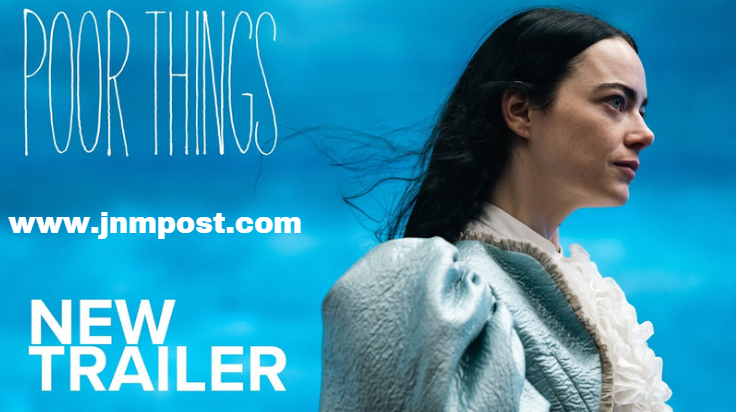Introduction
Overview of the Topic
Aristocat Poor Things is an intriguing and whimsical art movement that combines elements of aristocratic elegance with a playful and often satirical representation of the feline form. This unique genre captures the essence of high society through the depiction of cats in lavish, anthropomorphic portrayals. It blends humor, sophistication, and a touch of the bizarre, creating an enchanting visual narrative that has captivated art lovers and collectors worldwide.
Importance and Relevance
The significance of Aristocat Poor Things lies in its ability to challenge traditional art forms while providing commentary on social norms and behaviors. By anthropomorphizing cats, artists invite viewers to reflect on human nature, societal structures, and the absurdity of certain social practices. This genre not only entertains but also encourages deeper thought and discussion, making it a relevant and impactful addition to contemporary art.
The Origins of Aristocat Poor Things
Historical Context
The origins of Aristocat Poor Things can be traced back to the early 20th century, a time when societal changes and artistic innovations were rampant. The movement emerged as a response to the rigid conventions of aristocracy and the growing popularity of modern art forms. Artists sought to parody the opulence and grandeur of the upper class, using cats as their central figures to create a sense of irony and whimsy.
Influential Figures
Several key artists played pivotal roles in the development of Aristocat Poor Things. One notable figure is Henrietta Katzen, whose early works set the tone for the movement. Katzen’s intricate and humorous depictions of cats in aristocratic attire garnered widespread acclaim and inspired a generation of artists. Other influential figures include Leonardo de Purrinci and Felicia von Feline, both of whom contributed significantly to the stylistic evolution of the genre.
Themes and Styles in Aristocat Poor Things
Major Themes
The major themes in Aristocat Poor Things revolve around satire, social commentary, and the juxtaposition of the ordinary and the extraordinary. Common motifs include cats engaged in human-like activities, such as attending grand balls, lounging in opulent settings, or partaking in sophisticated leisure pursuits. These themes highlight the absurdity of certain social customs and the universal nature of certain behaviors.
Stylistic Approaches
Stylistically, Aristocat Poor Things is characterized by a blend of realism and fantasy. Artists often employ detailed, realistic techniques to render the feline subjects and their luxurious surroundings, while incorporating fantastical elements to enhance the whimsical nature of the works. This approach creates a visually engaging contrast that draws viewers into the imaginative world of Aristocat Poor Things.
Techniques and Materials
Artistic Techniques
Artists in the Aristocat Poor Things movement utilize a variety of techniques to achieve their distinctive style. Detailed brushwork, intricate line art, and vibrant color palettes are common, as these elements help bring the anthropomorphic cats to life. Techniques such as chiaroscuro and trompe-l’œil are also employed to add depth and realism to the fantastical scenes.
Materials Used
The choice of materials in Aristocat Poor Things is diverse, reflecting the eclectic nature of the genre. Traditional media such as oil paints, watercolors, and pastels are frequently used, but artists also experiment with mixed media, incorporating textiles, gold leaf, and even digital elements. This variety allows for a rich texture and depth in the artwork, enhancing its visual appeal.
Notable Works
Seminal Pieces
Several works stand out as seminal pieces within the Aristocat Poor Things movement. Henrietta Katzen’s “The Grand Feline Ball” is a prime example, depicting an elaborate ballroom scene with elegantly dressed cats. Another notable work is Leonardo de Purrinci’s “Aristocat’s Afternoon,” which captures a serene and opulent lounging scene, showcasing the luxurious lifestyle of its feline subjects.
Impact on Art and Culture
The impact of these notable works extends beyond the art world, influencing fashion, literature, and popular culture. The playful yet sophisticated nature of Aristocat Poor Things has inspired fashion designers to incorporate similar themes into their collections, while writers and filmmakers have drawn on its visual style and thematic elements to create engaging narratives.
The Cultural Impact of Aristocat Poor Things
Influence on Society
Aristocat Poor Things has left an indelible mark on society by challenging perceptions of class and culture. Its satirical approach encourages viewers to question societal norms and behaviors, promoting a more introspective and critical viewpoint. The genre’s widespread popularity has also fostered a greater appreciation for whimsical and humorous art forms, broadening the scope of contemporary art.
References in Popular Culture
References to Aristocat Poor Things can be found in various aspects of popular culture, from animated films and children’s books to fashion and interior design. The genre’s unique blend of elegance and humor resonates with audiences of all ages, making it a versatile and enduring source of inspiration.
The Contemporary Scene
Current Trends
In the contemporary art scene, Aristocat Poor Things continues to evolve, with artists exploring new themes and techniques. Recent trends include a focus on environmental issues, with feline subjects depicted in natural settings to highlight the beauty and fragility of the environment. Another trend is the incorporation of modern technology, such as digital art and virtual reality, to create immersive experiences.
Leading Artists
Leading artists in the current Aristocat Poor Things movement include Isabella Whiskers and Maximilian Meow. Whiskers is known for her innovative use of digital media, creating interactive pieces that engage viewers in new ways. Meow, on the other hand, focuses on traditional techniques, producing meticulously detailed works that pay homage to the genre’s origins while incorporating contemporary themes.
Exhibitions and Galleries
Major Exhibitions
Major exhibitions dedicated to Aristocat Poor Things are held in prominent art galleries and museums around the world. These exhibitions showcase the diversity and creativity of the genre, attracting art enthusiasts and collectors alike. Notable exhibitions include “Feline Fantasies” at the Louvre and “Paws and Whiskers: The Aristocat Collection” at the Metropolitan Museum of Art.
Noteworthy Galleries
Several galleries specialize in Aristocat Poor Things, offering a wide range of works from both established and emerging artists. The Whisker Gallery in Paris and the Purrfect Art Gallery in New York are two such venues, known for their extensive collections and commitment to promoting this enchanting genre.
Collecting Aristocat Poor Things
Tips for Collectors
For those interested in collecting Aristocat Poor Things, there are several key considerations to keep in mind. First, it is important to research and understand the genre, identifying the works and artists that resonate most with your personal taste. Attending exhibitions and visiting galleries can provide valuable insights and opportunities to acquire pieces. Additionally, working with reputable dealers and ensuring the authenticity of the artwork are crucial steps in building a meaningful collection.
Investment Potential
Aristocat Poor Things has shown considerable investment potential, with many works appreciating in value over time. The unique and captivating nature of the genre, combined with its growing popularity, makes it an attractive option for art investors. However, as with any investment, it is important to approach with caution and seek expert advice to make informed decisions.
Personal Stories and Case Studies
Individual Experiences
Personal stories from collectors and artists provide a deeper understanding of the impact and appeal of Aristocat Poor Things. One such story is that of Maria T., a collector who discovered her passion for the genre while attending an exhibition in London. Maria’s collection has since grown to include several notable pieces, and she describes her connection to the art as both emotional and intellectual, appreciating the humor and depth each work brings to her life.
Notable Case Studies
Case studies of notable collections offer further insights into the world of Aristocat Poor Things. The Smith Family Collection, for example, is renowned for its extensive and diverse holdings, featuring works from the genre’s early days to contemporary pieces. The family’s dedication to preserving and promoting Aristocat Poor Things has made their collection a valuable resource for researchers and enthusiasts alike.
Expert Insights
Opinions from Art Critics
Art critics have lauded Aristocat Poor Things for its originality and wit. Renowned critic Eleanor Paws describes the genre as “a delightful blend of elegance and satire, offering a refreshing perspective on both art and society.” Critics highlight the movement’s ability to engage viewers on multiple levels, combining visual beauty with thought-provoking themes.
Insights from Artists
Artists themselves offer unique insights into the creative process behind Aristocat Poor Things. Isabella Whiskers, for instance, discusses the importance of humor and imagination in her work, explaining how she strives to create pieces that are both visually stunning and intellectually stimulating. Maximilian Meow emphasizes the value of traditional techniques, noting how they lend a timeless quality to his art.
Conclusion
Summary of Key Points
The enchanting world of Aristocat Poor Things is a testament to the power of art to entertain, provoke, and inspire. This genre’s unique blend of aristocratic elegance and playful satire offers a refreshing take on traditional art forms, inviting viewers to explore the absurdities of high society through the eyes of anthropomorphic cats. From its historical origins and influential figures to contemporary trends and cultural impact, Aristocat Poor Things continues to captivate and engage audiences worldwide.
The Future of Aristocat Poor Things
Looking ahead, the future of Aristocat Poor Things appears bright. As artists continue to push the boundaries of the genre, incorporating new themes and technologies, the movement is poised to grow and evolve. Whether through traditional media or innovative digital formats, Aristocat Poor Things will undoubtedly remain a beloved and influential part of the art world.
FAQs
What are Aristocat Poor Things?
Aristocat Poor Things is an art movement that combines elements of aristocratic elegance with playful and satirical depictions of cats in anthropomorphic forms. The genre blends humor, sophistication, and fantasy, creating whimsical and thought-provoking artworks.
How did Aristocat Poor Things originate?
The movement originated in the early 20th century as a response to societal changes and the growing popularity of modern art forms. Artists sought to parody the opulence and grandeur of the aristocracy by using cats as central figures in their works.
What are the major themes in Aristocat Poor Things?
Major themes include satire, social commentary, and the juxtaposition of the ordinary and the extraordinary. Common motifs feature cats engaged in human-like activities, highlighting the absurdity of certain social customs and behaviors.
Who are the leading artists in this genre?
Leading artists include Henrietta Katzen, Leonardo de Purrinci, Felicia von Feline, Isabella Whiskers, and Maximilian Meow. Each artist has contributed to the development and evolution of the genre through their unique styles and thematic approaches.
Where can I see Aristocat Poor Things exhibited?
Major exhibitions are held at prominent galleries and museums worldwide, such as the Louvre and the Metropolitan Museum of Art. Specialized galleries like the Whisker Gallery in Paris and the Purrfect Art Gallery in New York also showcase extensive collections of Aristocat Poor Things.
Is it a good investment to collect Aristocat Poor Things?
Aristocat Poor Things has shown considerable investment potential, with many works appreciating in value over time. However, as with any investment, it is important to approach with caution, conduct thorough research, and seek expert advice to make informed decisions.






Be First to Comment